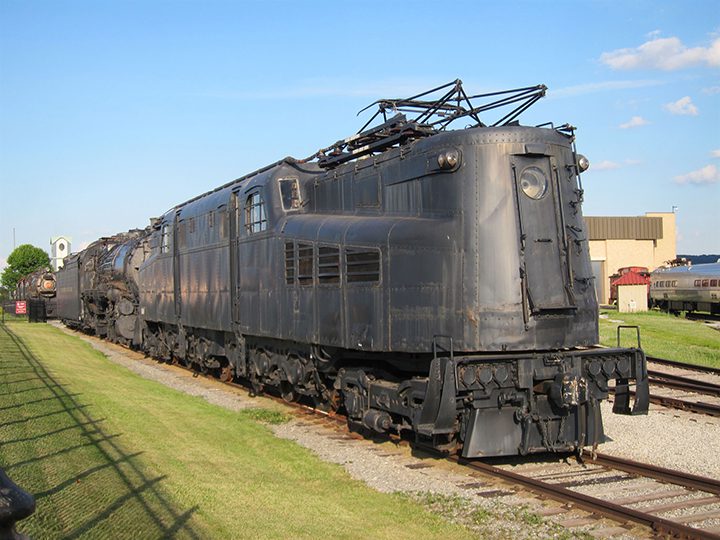Inducted in 2012
Pennsylvania Railroad 4800, which was nicknamed “Old Rivets” was built by General Electric in 1934. It was kept in service by successor railroads, Penn Central and Conrail, until 1979, a service of 45 years.
In 1933, Pennsylvania Railroad asked both General Electric and Westinghouse to design an electric locomotive that was capable of speeds of 100 miles per hour, have a lighter axle load than the P5 locomotive then in use, and to be double ended with a cab in the centre. General Electric designed the 4800 (GG1) and Westinghouse the 4899 (R1).
The frames, running gear and riveted body for the GG1 prototype were made by Baldwin Locomotive Works, the electrical components by General Electric of Erie Pennsylvania. The finished locomotive was 79 feet 6 inches (24.23 m) long and 16 feet (4.9 m) tall, with both of its pantographs lowered. After testing on passenger service between Philadelphia and New York, the PRR preferred the 4800 prototype as it did not exert as much lateral force on the rails. As well, it was articulated which allowed for a smaller turning radius.
The PRR ordered 57 locomotives and asked designer Raymond Loewy to refine the appearance. Loewy recommended that all subsequent models of the class should have a welded body rather than the riveted body on the prototype. This led to the nickname “Old Rivets” being given to 4800. On January 28, 1935, 4800 inaugurated electric passenger service between Washington and Philadelphia by pulling a charter train for railroad and government officials. It set 4800 set a speed record of 102 miles per hour (164 km/h). Regular passenger service began on Feb. 10, 1935.
The 4800 was sold by Conrail in 1980 to the Lancaster chapter of the National Railway Historical Society as scrap for $30,000. The locomotive was given a cosmetic restoration back to its 1935 appearance by the nearby Strasburg Railroad and volunteers. It was put on display at the Railroad Museum of Pennsylvania in 1982, and was designated a Historic Mechanical Engineering Landmark the following year by the American Society of Mechanical Engineers.
The GG1 is known for its role in pulling Franklin Roosevelt’s funeral train out of Washington. Three couplers broke on departure and a reporter is said to have observed, “The Republicans have always known it would be difficult to get Roosevelt out of Washington.”


